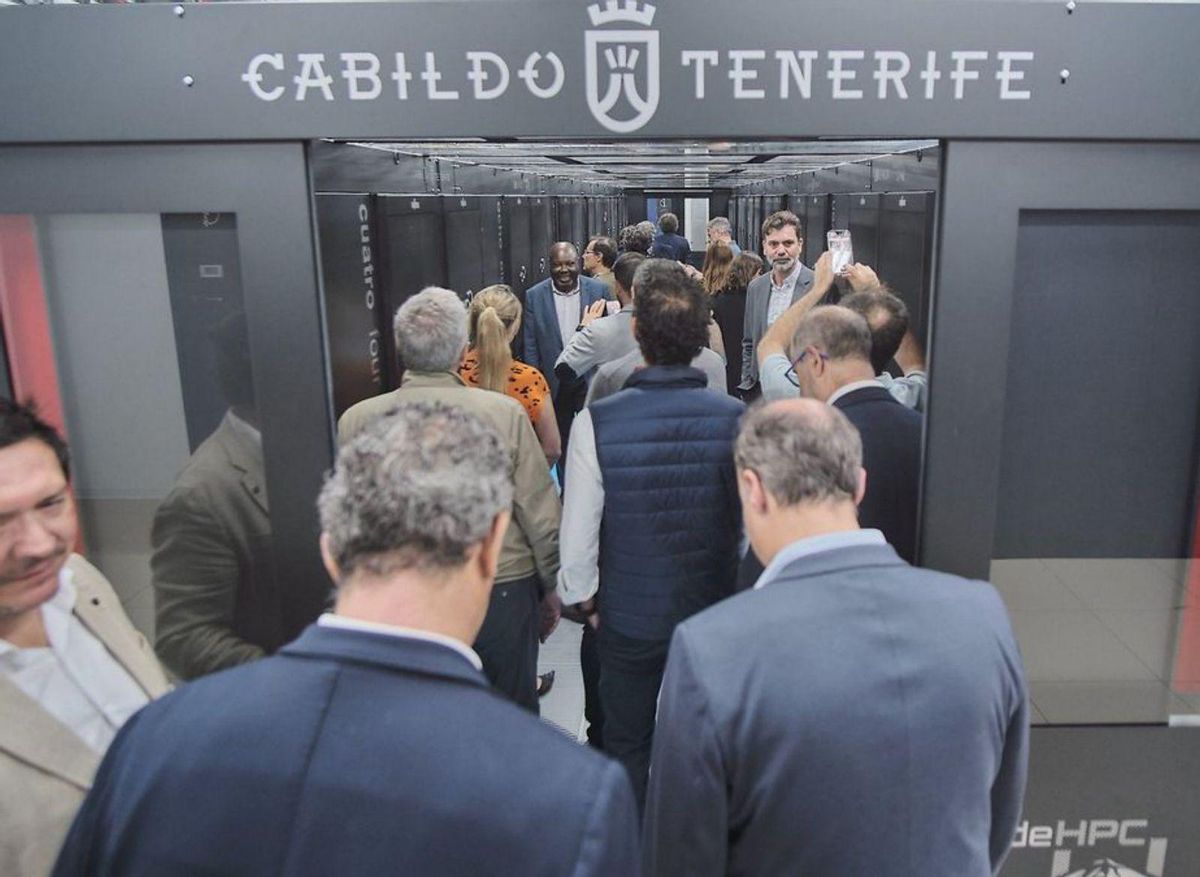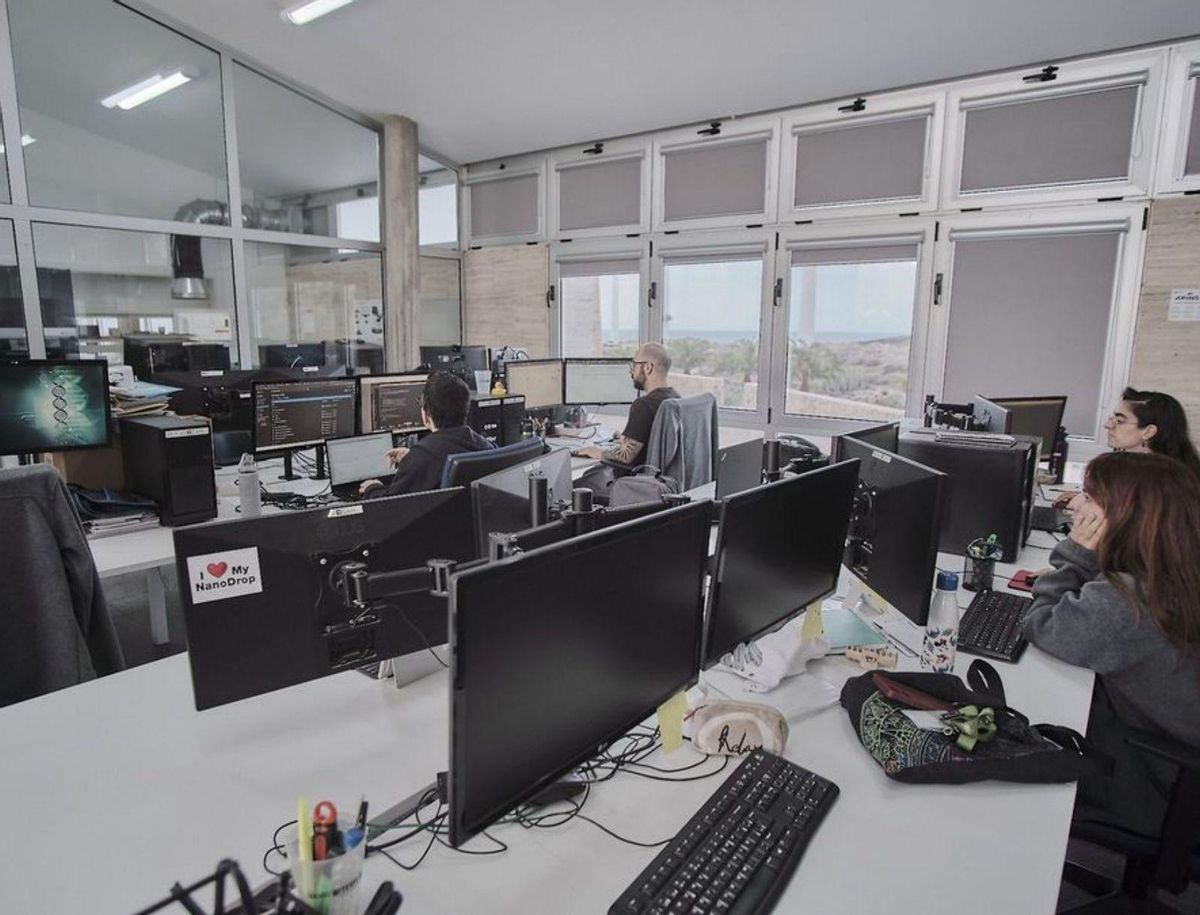Technological Institute for Renewable Energies of Tenerife, or simply ITER, as it is known. Half a million square meters amidst the harsh landscape of the southern part of the island, in the municipality of Granadilla de Abona, making it the largest public scientific laboratory in the whole Macaronesia region. A meeting point for innovation, development, and research, the famous R&D&I equation that is related to technological capacity and, therefore, to the progress of society. With more highlights than shadows – brain drain, the need for improved maintenance, or wounds still open due to political legacies – as a result of a visit to its core in Granadilla headquarters.
The Minister for Innovation, Research and Development, Juan José Martínez, and the CEO of ITER, Begoña Ortiz, act as guides. But first, let’s set the stage for the report.
Public Enterprise
[–>
The Technological and Renewable Energy Institute, SA (ITER) is a public enterprise, with majority participation from the Island Council, which since 1990 has been carrying out work in the fields of research and development for the use of renewable energy sources, implementation of new technologies, and the environment. Just a few days ago, it received an award from CEOE-Tenerife for its social trajectory. The Institute is divided into major areas: Renewables, Engineering, and Environment, as well as various facilities dedicated to the dissemination of its activities and information on what is being researched.
From the Genomics department and Canalink’s fiber optics to the Wind Tunnel and supercomputers, or from Robotics to bioclimatic homes. Not forgetting Involcan, the entity responsible for volcanic seismic surveillance aimed at reducing risks. A universe that includes, for example, Spain’s first multi-collector mass spectrometer for isotopic analysis of noble gases. The instrumentation that will enhance monitoring work of volcanic activity and exploration of underground geothermal and water resources.
Martínez welcomes EL DÍA to the visitor centre, the nerve center of this vast complex. He values the outreach work from the start. “It is one of the most important tasks we do. Especially with young people through guided tours to schools and institutes.” He emphasizes that “during the tour, they have the opportunity to learn, for instance, different ways of harnessing water or generating renewable energy.” Martínez describes ITER as “one of the main transformation tools that Tenerife has in multiple aspects: research, development, and innovation with a series of specific features, among others, for example, that it is capable of self-financing. In its origins, it was linked to the introduction of renewable energies, both wind and solar, but it has evolved towards other niches such as “robotics, drone manufacturing, having one of the largest supercomputers in the country, a large data center that accompanies it, and a whole host of research activities and projects.”

Exploring the Depths of the Impressive Scientific Hub in Tenerife / José Domingo Méndez
Supercomputer
[–>
ITER recently showcased all its technological and innovative potential to the companies participating in the XVII Odoo 2024 Conference. In this framework, the D-ALiX data processing center capabilities and the supercomputer were presented, along with the role played by the Scientific and Technological Park (PCTT) as a hub. The CEO of ITER, Begoña Ortiz, and the Engineering Director, Jesús Rodríguez, presented Teide HPC (High Performance Computing).
Geothermal Energy
[–>
The major ongoing project, in collaboration with Involcan, focuses on exploring and possibly exploiting geothermal resources on the island. The concept revolves around a public-private partnership. ITER, Involcan, and DISA won 90% of the mining concessions. Martínez highlights: “We are in the preliminary phase before the first interventions on the territory to determine the ideal site to start with exploration drills. As we find a viable resource, we will have the necessary energy on the island.” An energy that is also continuous, not just when there is sun or wind but can be available 24 hours a day, 7 days a week, and 365 days a year.

Exploring the Depths of the Impressive Scientific Hub in Tenerife / José Domingo Méndez
Advantages
[–>
Martínez emphasises the idea that ITER “provides Tenerife with a competitive advantage due to our tax benefits when it comes to financing projects and conducting research, attracting both talent and investment to the region.”
Investing in Research and Development in the Canary Islands
One of the key aspects is “their contribution to critical infrastructures for the development of multiple activities linked to new technologies.” For example, “Canalink has made us one of the best-connected territories in the world by optic fibre. Or the supercomputer that gives us the ability to operate in the digital world.” In summary: “The objective is to obtain public resources accessible also to the private sector that allows the development of activities that, probably, would not be possible in other territories. ITER itself is a first-class technological partner that brings its knowledge and experience. It is a very important strategic element in diversifying the economic model.” Martínez values projects such as the Wind Tunnel “that gives us many possibilities in sports, the naval industry, or aerodynamic design in general when it comes to experimenting or carrying out work.” He also emphasizes the value of the Genomics laboratory, which played a key role during the Covid-19 crisis. He concludes: “We are laying the groundwork for the development of an industry linked to advanced biotechnology or biomedicine.”
Constant Activity
The ITER generates a lot of activity through scientific dissemination. For example, by bringing it closer to the Local Development Agencies of Tenerife as part of the Municipal Internationalization Plan of the Island.
The institute provides human and material resources. It has been growing and expanding its lines of technological action and innovation, researching and developing new materials, processes, and technologies since it was founded 34 years ago.
Involcan, a Vital Component
The Cabildo takes the program Canaries: a volcanic window in the Atlantic all over the Island, as well as having already visited part of the Archipelago. The last municipality visited was Puerto de la Cruz, but before that, it passed through La Guancha, La Orotava, or Santa Cruz, the capital, just on the most recent route. The educational initiative of the Canary Islands Volcanological Institute (Involcan) aims to contribute to the reduction of volcanic risk in the Canary Islands. Just take the example of La Guancha.
The free activity took place at the Training Centre of the northern municipality. Its purpose was to inform and educate citizens about the different dangers associated with the volcanic phenomenon and the actions to reduce the risk.
It was recommended that residents connected to security and emergencies, professionals, or volunteers attend the two-day event. The goal: to help make the Canary Islands a better informed and organized community in the face of risk, capable of responding to threats in a volcanically active archipelago.















